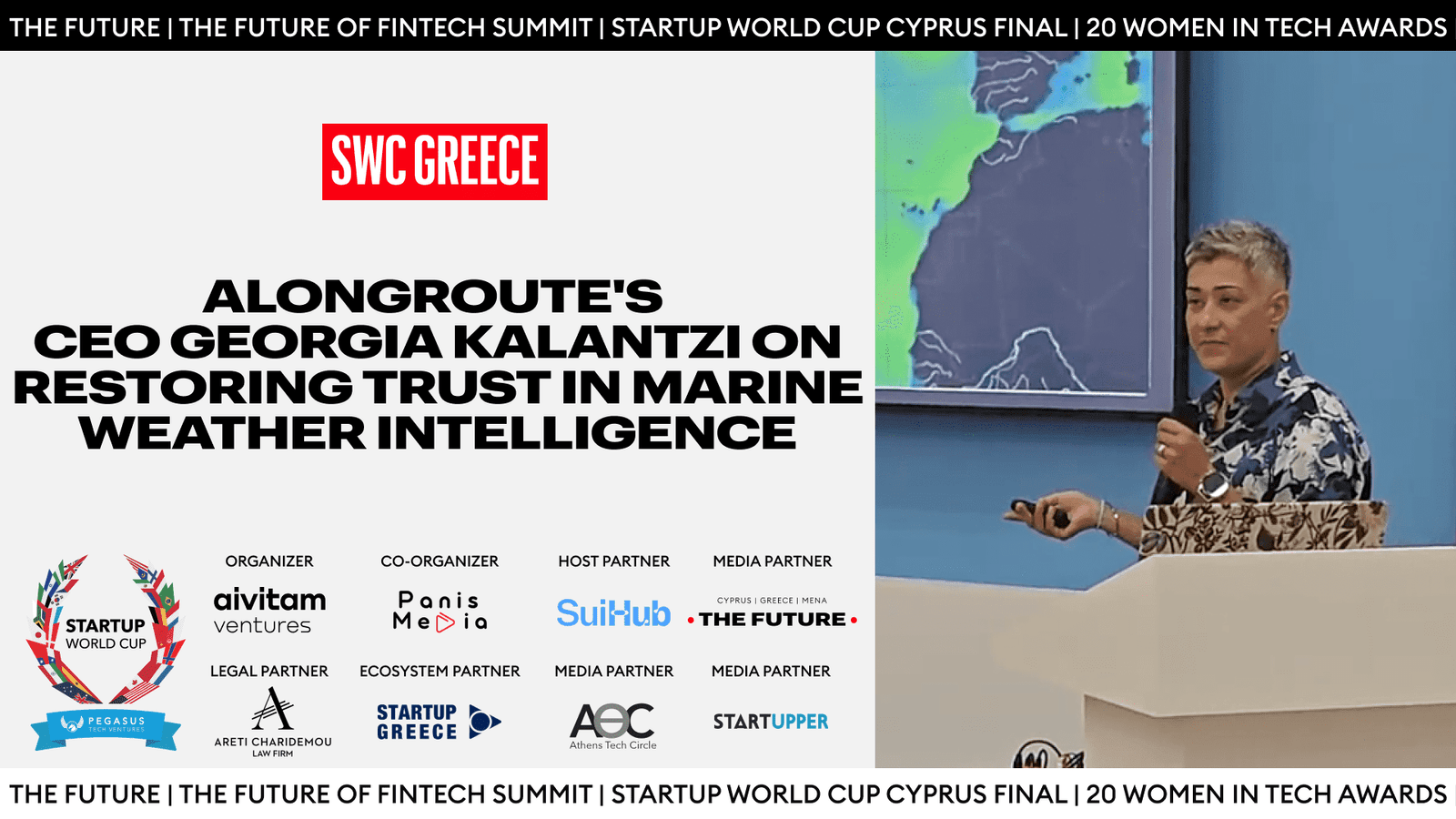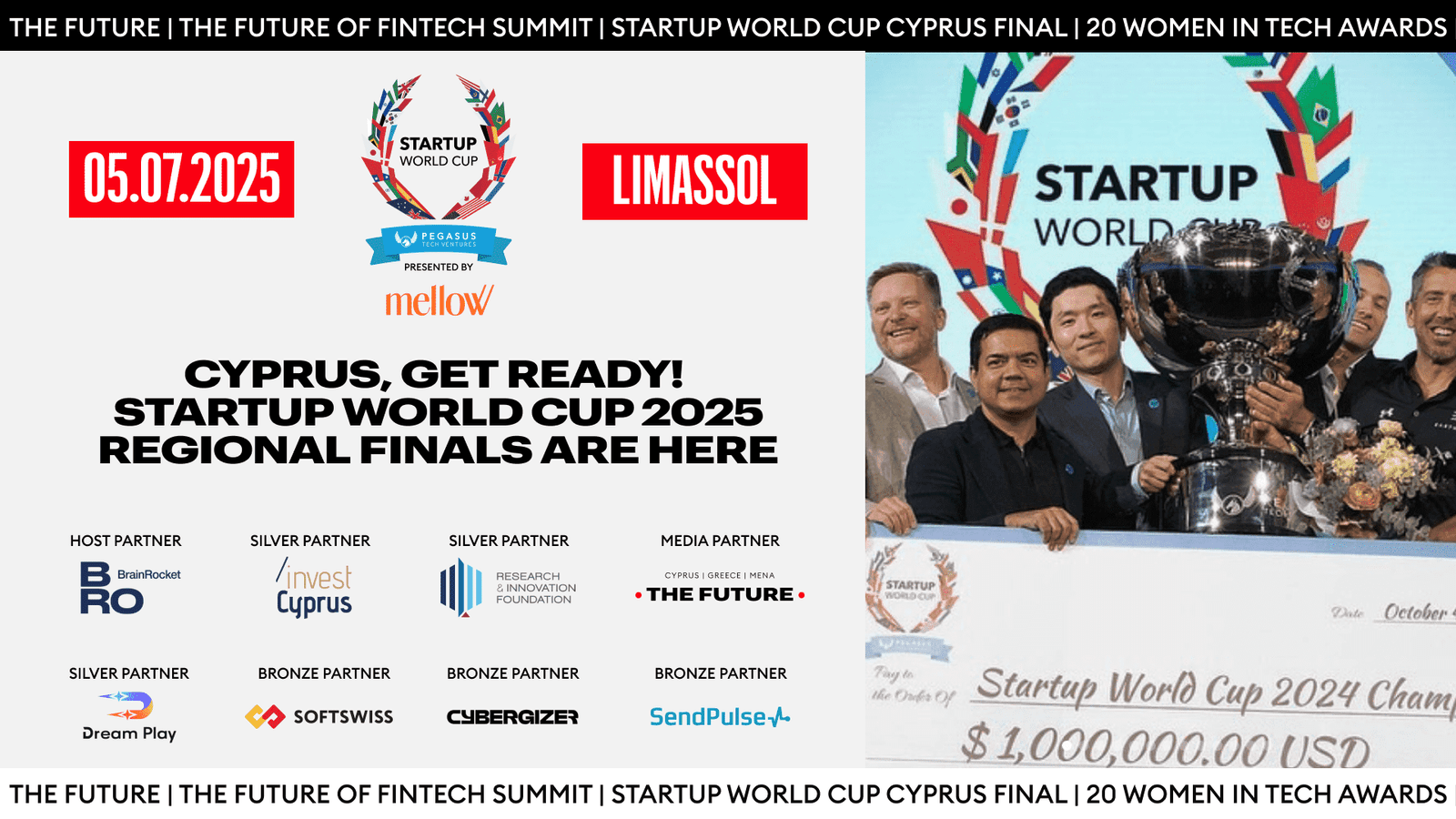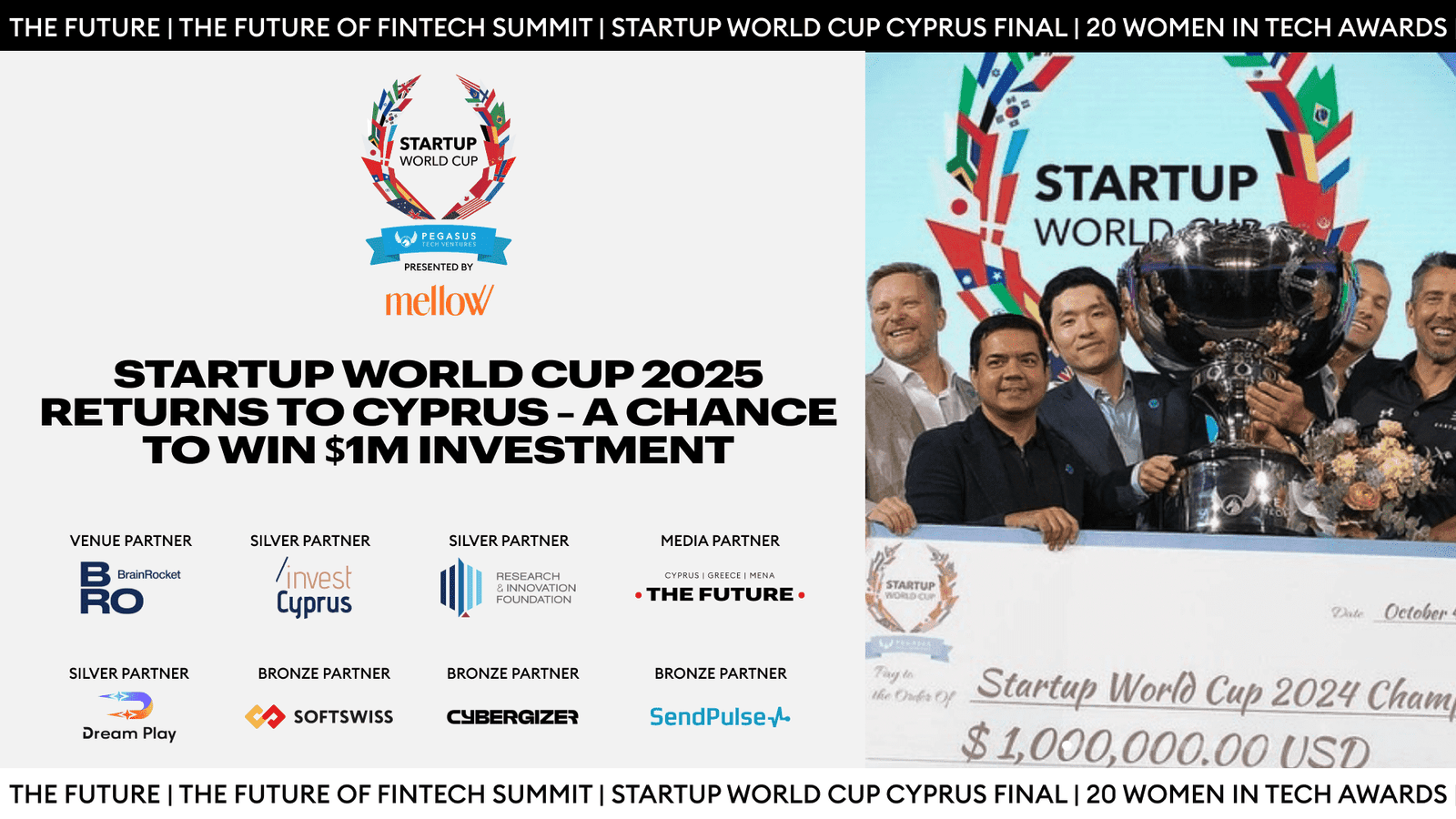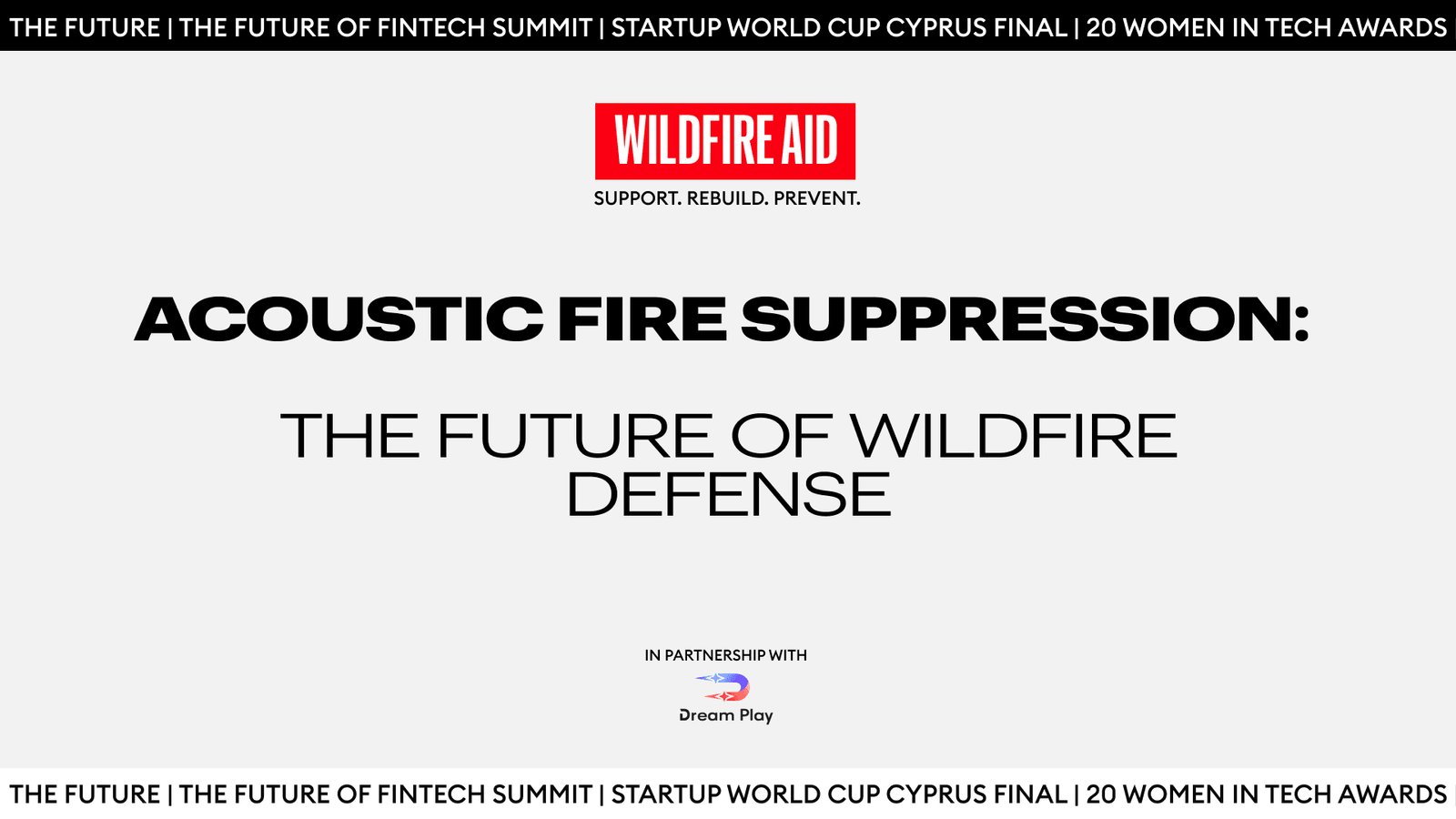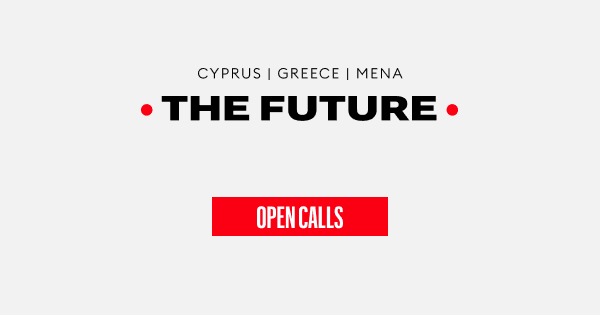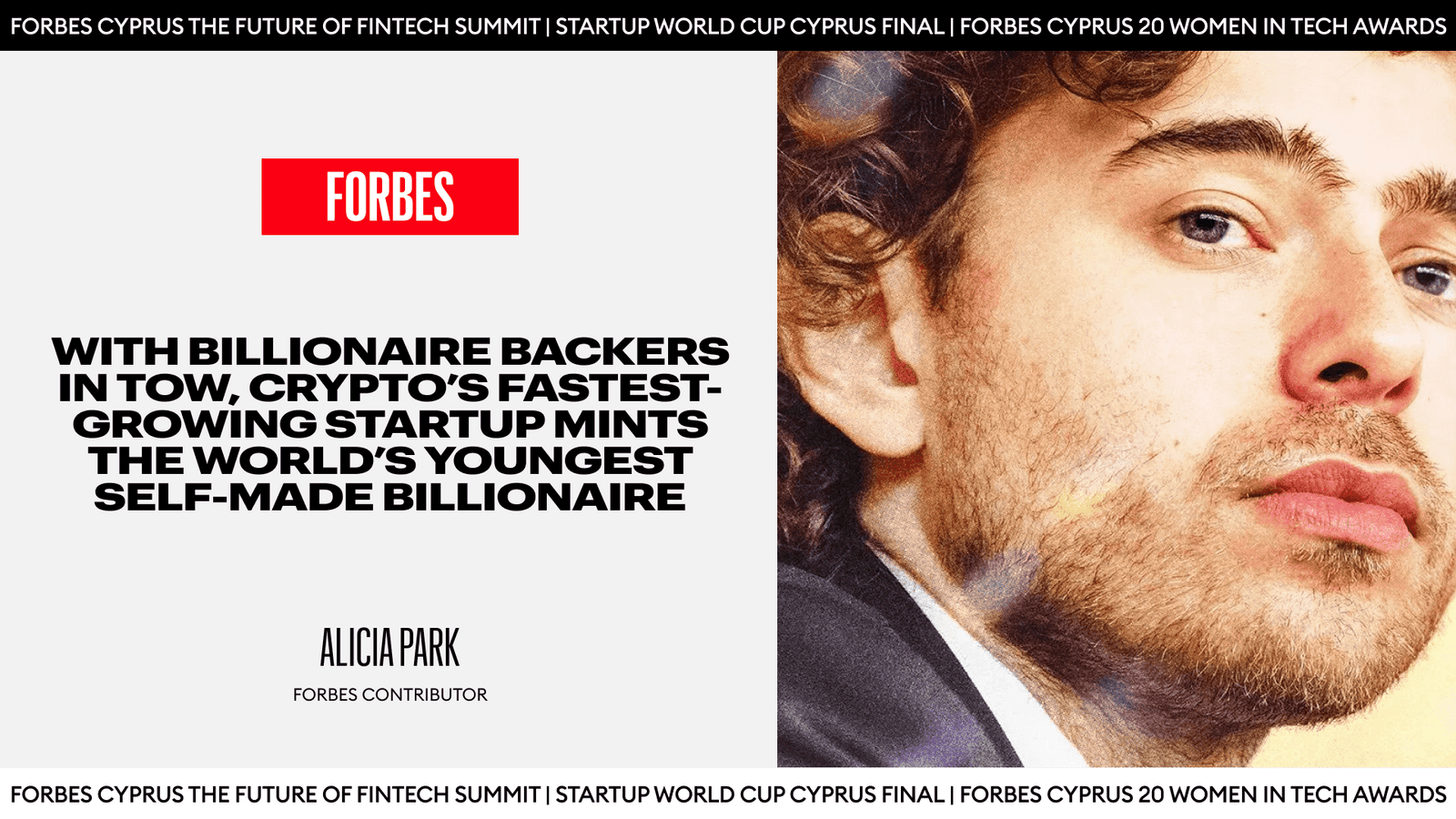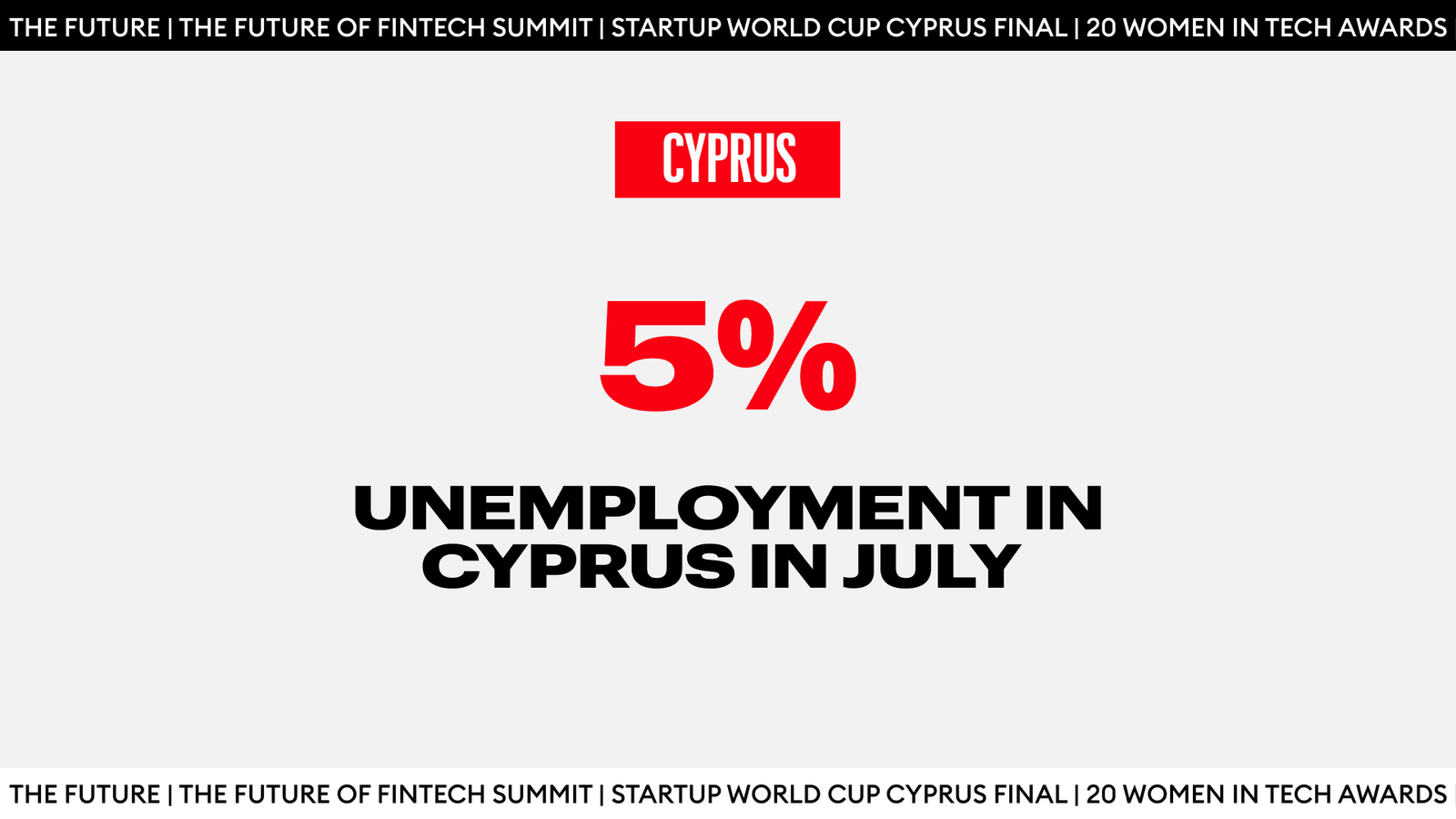The captain checks the routing system one more time before departure. The forecast indicates moderate seas ahead, with a steady northward run. Six hours later, however, he is staring at three-meter swells that none of the models had picked up. He eases the throttle, manually adds half a day to the voyage, and has no choice but to spend the fuel the algorithm promised to save.
For the captain, who has been working in the industry for the past few decades, these surprises are actually… not surprising. He has come to terms with the unreliability of the predictive decision-support tools in his industry.
Follow THE FUTURE on LinkedIn, Facebook, Instagram, X and Telegram
This happens more often than the industry admits. About 80% of global trade moves by sea, yet the marine weather-based voyage planning and optimization tools often fail to match real conditions. Captains stop trusting the systems. When it comes to safety, they rely on their gut feelings and experience of the waters. Unreliable or misleading marine weather forecasts push ships into harsher seas, leaving crews to face higher slamming risks and hulls to take on more stress. At the same time, engines burn more fuel, the costs of carbon allowances spike, and the emissions that regulatory bodies are trying to control continue to rise.
This is the problem AlongRoute is trying to solve from its very core. The Greece-based startup delivers high-accuracy and resolution marine weather forecasts that it reports as 10–20% more reliable than industry standards, especially in heavy seas and in the later days of the outlooks, where traditional physics models break down. The team combines Earth observation with hybrid AI to feed routing algorithms the accuracy they need to win back captain confidence and deliver the fuel savings and decrease the environmental impact the industry demands under tightening EU ETS requirements.
In this interview, Georgia Kalantzi, CEO and co-founder of AlongRoute, explains how decades of oceanography work led her to tackle shipping’s data problem, how their Mediterranean prototypes scaled globally, and what it takes to make the systems behind maritime decarbonization actually work.
What brought you to the world of marine weather and routing?
My background is in oceanography. For years, I’ve been working on improving traditional numerical forecast models based on physics modeling. One thing I noticed was how even small improvements required enormous effort but delivered limited accuracy gains. I realized that traditional models had hit their ceiling, and so I began to explore new, data-driven ways to understand the ocean and predict its behavior. Voyage optimization and cargo vessel routing were the natural first step of inquiry because accurate marine weather forecasts directly affect safety, efficiency, and emissions. It’s where science meets real-world impact.
When did you first encounter forecast inaccuracy affecting real voyages or routing decisions?
That came during our first accelerator, the EU-funded DigiCirc Blue Economy program in 2022, where we developed our proof of concept and prototype. As we started to engage with early adopters, mainly voyage optimization companies, shipping operators, and captains, we confirmed what we had suspected: routing systems were widely distrusted. The problem wasn’t the algorithms, but the marine weather data feeding them. For instance, marine weather forecasts often predicted sea conditions that never occurred, leading to inefficient routes, fuel waste, and frustration on the bridge. It became clear that improving forecast accuracy was not just about better science; it was about restoring confidence in the systems shaping maritime operations.
How did that experience connect to emissions or the EU Emissions Trading System (EU ETS) pressure in your conversations with operators? (Note for readers: The EU ETS is the EU’s main tool for addressing emissions reductions, covering the following sectors, representing about 40% of the EU’s total CO 2 emissions: power, heat generation, energy-intensive industrial sectors, aviation, and, since the latest revision, the maritime sector.)
The link is immediate. Under the EU ETS, fuel and emissions translate directly into cost. Many operators try to optimize routes to cut CO₂, but if the underlying marine weather data is unreliable, their optimization tools can’t perform. When we spoke with captains and operators, they consistently told us they don’t fully trust routing systems because, in practice, forecasts often fail to match real sea state conditions. When safety and timing are on the line, they rely on their experience and intuition instead.
That gap between regulatory pressure, data reliability, and real-world decisions is exactly what AlongRoute is solving, making decarbonization both practical and trustworthy.
Why did you decide to tackle this in shipping and not in another industry that uses environmental data?
Shipping moves around 90% of global trade and is the sixth-largest CO₂ emitter worldwide, responsible for roughly 3.5% of global emissions. It’s also one of the most weather-dependent and least digitally transformed industries. Every inaccuracy in marine weather forecasts can trigger costly reroutes, safety risks, and supply-chain disruptions. It is the perfect intersection of scientific challenge and real-world impact. I wanted our work to create tangible value where precision truly matters. Shipping is ready for transformation but constrained by outdated, unreliable data, and that’s exactly where AlongRoute can make the biggest difference.
What is the goal of AlongRoute, and who benefits from its mission?
Our goal is to restore trust in marine weather intelligence. We deliver high-resolution forecasts and historical data for waves, wind, and currents that are up to 20% more accurate than industry standards, such as data from the Copernicus Marine Service. By combining Earth observation with hybrid AI, we help shipping companies, software vendors, insurers, offshore operators, and more maritime segments make safer, greener, and more profitable decisions. Ultimately, this includes everyone who depends on the sea and its predicted behavior benefits, from ship crews to the climate itself.
Who is on the core team today?
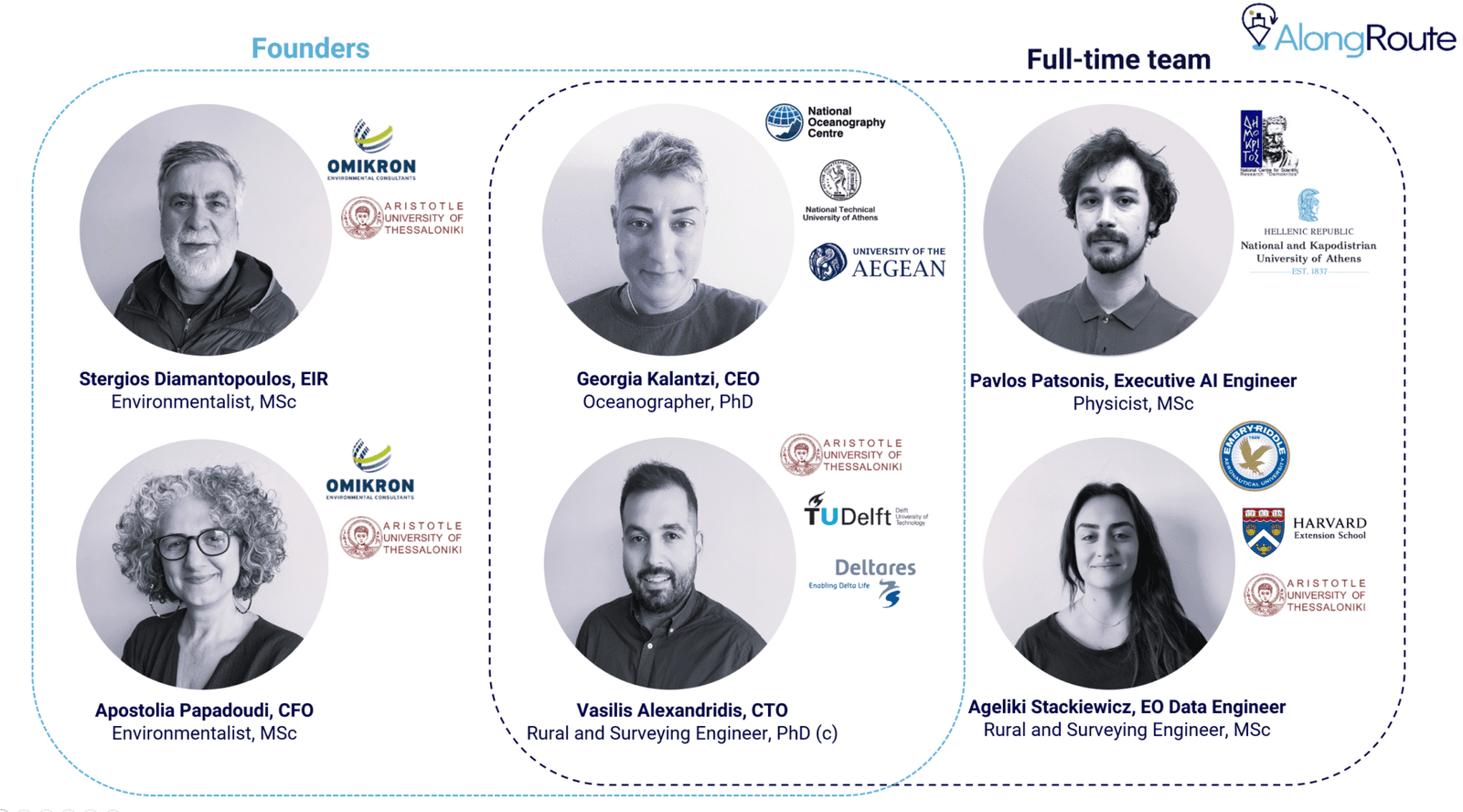
Our team brings over 90 years of combined expertise across business, innovation, oceanography, geomatics, AI, physics, remote sensing, data science, and environmental innovation. I, Georgia Kalantzi, lead AlongRoute as CEO, with a PhD in oceanography and a strong background in Applied Environmental Science and Innovation. Our CTO, Vasileios Alexandridis, is a geomatics and AI specialist shaping our hybrid forecasting systems. Stergios Diamantopoulos, the Entrepreneur in Residence, brings decades of experience in environmental management and entrepreneurship, while Apostolia Papadoudi, CFO, ensures financial and operational integrity. Our full-time team includes Pavlos Patsonis, a physicist with an MSc in Earth Observation and AI, leading our model development, and Ageliki Stackiewicz, a rural and surveying engineer with an MSc in EO, who drives data integration and spatial analytics. Together, we unite science and technology to deliver precision and trust in marine intelligence.
Which ocean and weather variables do you model at high resolution today, and why are these critical to routing decisions?
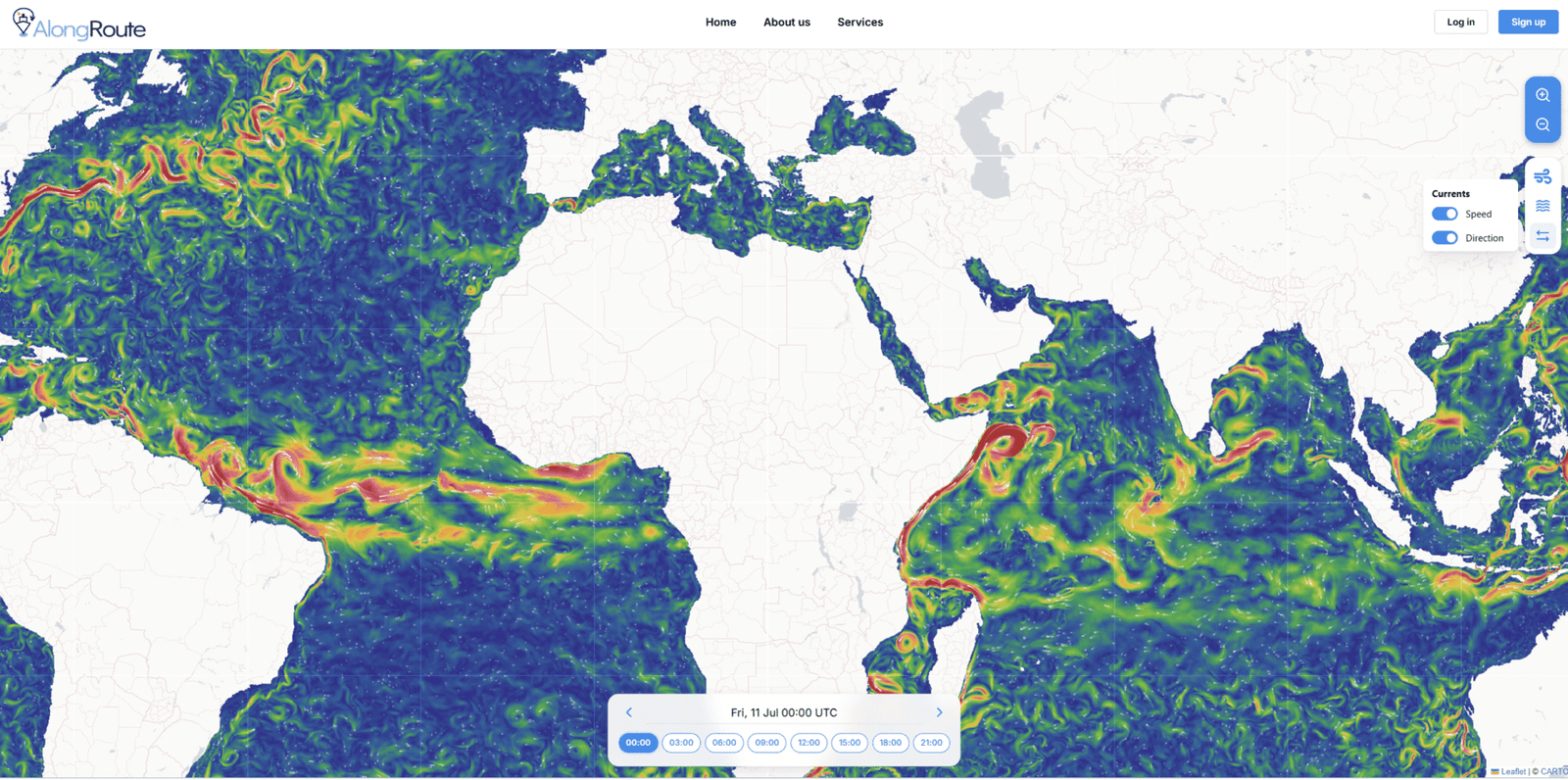
We model key oceanographic and atmospheric variables that drive maritime operations, such as wind speed and direction over the sea surface, significant wave height and direction, peak and mean wave period, swell and wind-sea parameters, and surface current speed and direction. These determine how vessels perform, how much fuel they consume, and how they can safely maintain course. Even small inaccuracies in these predictions can disrupt route planning, engine performance, and arrival times. Beyond navigation, these parameters are equally critical for post-voyage insurance assessments, where verified weather data helps validate claims, and for offshore energy operations, where unexpected sea-state events can cause costly downtime or safety incidents. High-resolution, accurate modeling gives operators, insurers, and energy companies the trusted intelligence they need to plan, operate, and recover with confidence.
How do you combine physical knowledge and AI methods in your forecast stack while maintaining reliability in new conditions?
Our models are built around a hybrid physics-AI architecture. We use physical ocean models and reanalysis data to ensure scientific consistency, while deep learning components, like GRUs and GNNs, learn the hidden, non-linear relationships that physics alone can’t capture. This combination allows us to correct systemic biases dynamically and maintain accuracy even under new or extreme conditions. We don’t replace physics; we enhance it through data-driven learning.
How do you measure forecast skill in production, and what thresholds do you consider acceptable for deployment?
We rigorously benchmark our marine weather forecasts against multiple reference datasets, including satellite observations, buoy measurements, and global reanalysis products. Our validation uses standard statistical metrics such as RMSE, bias, and correlation coefficients.
We aim to outperform industry standards like Copernicus Services by 10–20%, particularly under intense sea states and beyond day five in the forecast horizon (the areas where traditional models tend to degrade most).
Each validation involves double comparisons: Copernicus forecasts are matched in space and time with observed data, and AlongRoute forecasts are evaluated for the same locations, periods, and sample sizes. We then quantify our overperformance statistically, ensuring that any improvement is both measurable and repeatable. This rigorous approach ensures our forecasts are not just more accurate but consistently reliable for operational maritime use.
How do you handle data governance and customer confidentiality requirements in production use?
Data integrity and confidentiality are central to our operations. We follow strict governance protocols, ensuring traceability and compliance with both EU and international data standards. Our systems separate client data pipelines from internal training datasets, protecting sensitive operational information. All client agreements include confidentiality and data-protection clauses. We also implement version control and encryption across our APIs to guarantee that our forecasts remain verifiable, secure, and tamper-proof.
In 2021, you built a Mediterranean prototype focused on high-resolution forecasts of key ocean variables. What did that system include, and why did you choose those variables and resolutions?
We chose the Mediterranean as our “sandbox”: a small, closed basin with highly dynamic conditions, perfect for our first trials. Our prototype, developed under the DigiCirc Blue Economy Accelerator, initially focused on significant wave height and direction, the most critical parameters for maritime operations. We experimented with multiple workflows and AI architectures, testing how hybrid AI and Earth Observation could outperform traditional physics-based models. The results were outstanding and opened the way for our global scale-up. This work was later supported by the EuroCC network, where we used high-performance computing resources from the Austrian HPC Center, and it ultimately led to a scientific publication in Procedia Computer Science, validating our early innovation both technically and academically.
After external validation in 2024 and publication in 2025, how should operators read the reported skill gap versus Copernicus in day-to-day routing decisions?
Our validation shows that AlongRoute performs 10–20% better than Copernicus, especially during intense sea states and beyond day five, where traditional models tend to fail. This improvement directly enhances the performance of voyage optimization systems, which depend on accurate marine weather forecasts to propose optimal routes. Today, many captains distrust these systems because they’re based on data that often misrepresents real sea conditions, forcing them to rely on intuition to protect crew and cargo safety. By providing more precise and higher-frequency marine forecasts, we empower these tools to earn back that trust. For routing providers, our data improves algorithmic efficiency and reliability; for shipping companies, charterers, and operators, it translates into safer routes, lower fuel consumption, and fewer costly deviations; a tangible upgrade in both safety and sustainability.
Why did you choose to participate in Startup World Cup Greece this year, and what did the experience clarify about your message?
We joined Startup World Cup Greece to test how well our message resonates beyond the blue-tech ecosystem. To investors, innovators, and the broader tech community. It helped us refine how we communicate the magnitude of the problem we’re solving: that inaccurate marine weather data silently costs billions in fuel, risk, and emissions. The experience reaffirmed that what we’re building isn’t just a better forecast; it’s an enabling technology for safer and more sustainable ocean operations. It also reminded us that communicating scientific depth with business clarity is key to scaling our impact.
What are two product milestones and one commercial milestone you are committing to in the next twelve months?
Technologically, we’re focused on (1) advancing from our current validated pipeline to a fully AI-native 15-day forecasting system with near-real-time updates, and (2) expanding our data infrastructure to cover global historical and forecast datasets at a four-times-per-day frequency. Commercially, our key milestone is scaling from pilots to full subscription contracts with maritime software vendors and voyage optimization companies. We’ve already signed our first multi-year deal and are finalizing two more.
Where do you want AlongRoute to be in the next five years?
In five years, we aim to be recognized as a global leader in marine weather intelligence, powering decision-making across shipping, offshore energy, insurance, and ESG.
Our vision is to make highly accurate, data-driven ocean insights accessible and actionable at scale, transforming how the maritime industry operates and decarbonizes. We want to be the trusted backbone of marine weather data worldwide, enabling safer voyages, optimized logistics, and measurable emissions reductions. Ultimately, AlongRoute’s impact should reach beyond shipping, helping build a more resilient, climate-smart blue economy.
